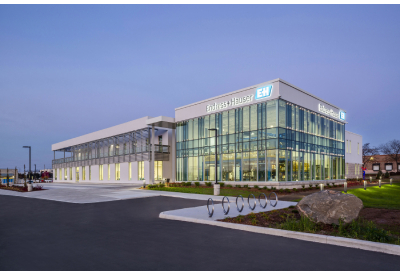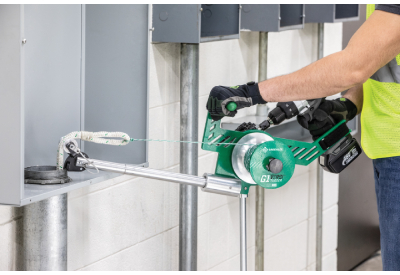Endress+Hauser Customer Experience Centre Achieves ZCB Certification

September 30, 2022
The Endress+Hauser Customer Experience Centre is Zero Carbon Building (ZCB) – Design Certified, the first of two advanced sustainability targets for the new facility.
The 47,000 SF training and administrative centre located in Burlington, ON, is the first privately owned facility to target ZCB and LEED Gold Certification simultaneously, and the first Net Zero Energy, Net Zero Carbon design for the international company, setting a new standard for its international portfolio of buildings.
Endress+Hauser views the training and education of young people as a sign of social responsibility
Established by the Canadian Green Building Council, ZCB standards are a made-in-Canada framework that define low-carbon design and operational performance for buildings. This is mcCallumSather’s second ZCB Certified facility, following the success of The Joyce Centre for Partnership & Innovation (with B+H), the first building in Canada to achieve both ZCB Certifications for Design and Performance.
Endress+Hauser, a Swiss Owned Family Company, is deeply committed to sustainability and originally set a target of LEED Silver, similar to a recently constructed centre in Calgary. The design team conducted a Net Zero study, demonstrating how, with a modest additional investment, we could reduce energy consumption by 40% over the Calgary facility, including layers of energy reduction strategies, passive design, occupant and internal gain strategies, and active design strategies such as carbon offsets, geo fields and onsite solar.
Endress+Hauser is a global leader in measurement instrumentation, services and solutions for industrial process engineering. Its specialized scientific equipment is a centre point of this exciting design. This achievement helps to demonstrate the potential for net zero design within science driven facilities, which often require higher energy demands to help manage and run its specialized equipment, such as the prominent PTU Unit, a feature of the design.
Congratulations to the full design team and Endress+Hauser on this exciting achievement. Learn more about the project here: https://www.mccallumsather.com/projects/endresshauser-customer-experience-centre/
Hear from the team about the process of net zero design in a presentation to the CAGBC last year: https://www.mccallumsather.com/watch-now-endresshauser-customer-experience-centre-cagbc-presentation/
Learn more about the Zero Carbon Building standards here: https://www.cagbc.org/





